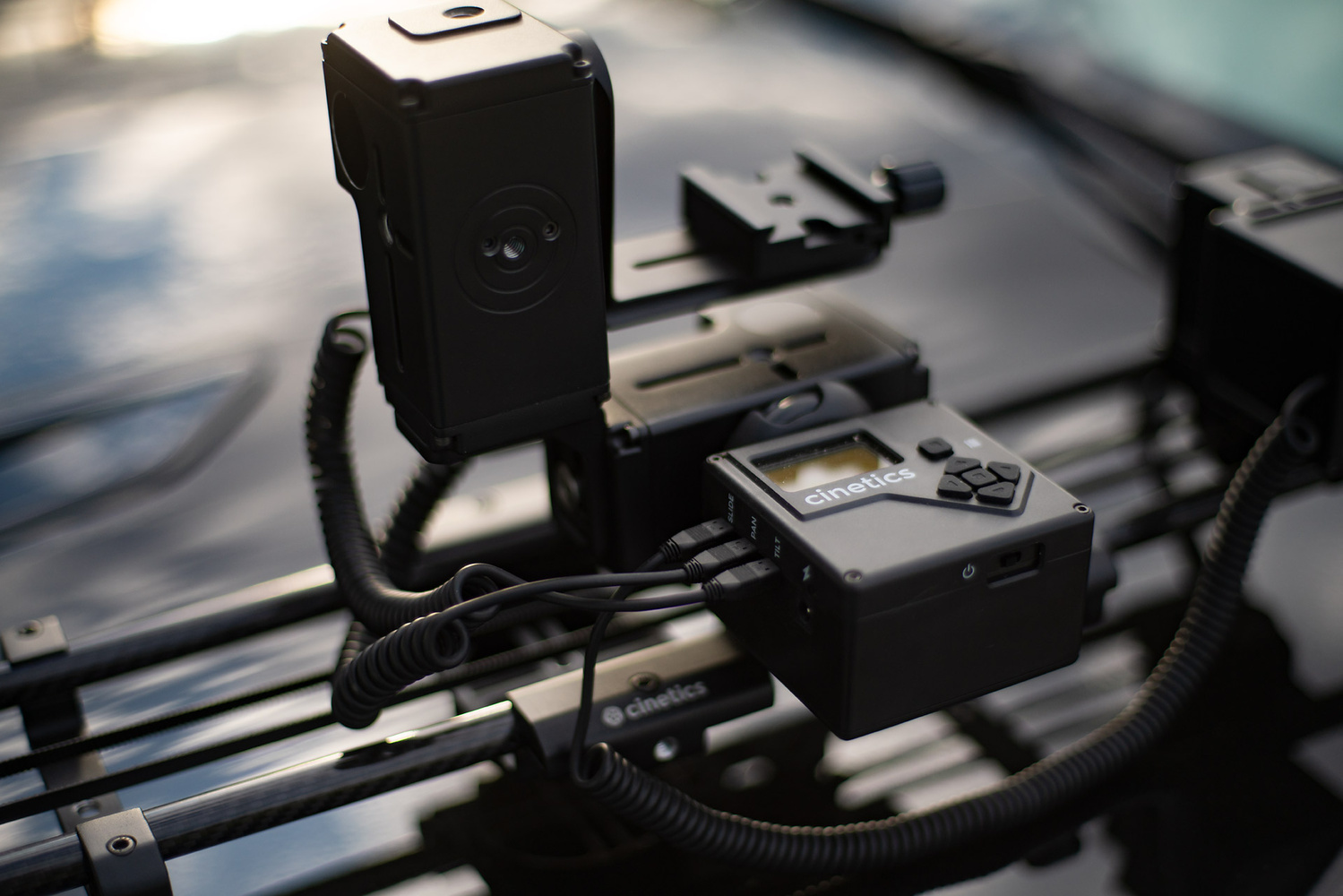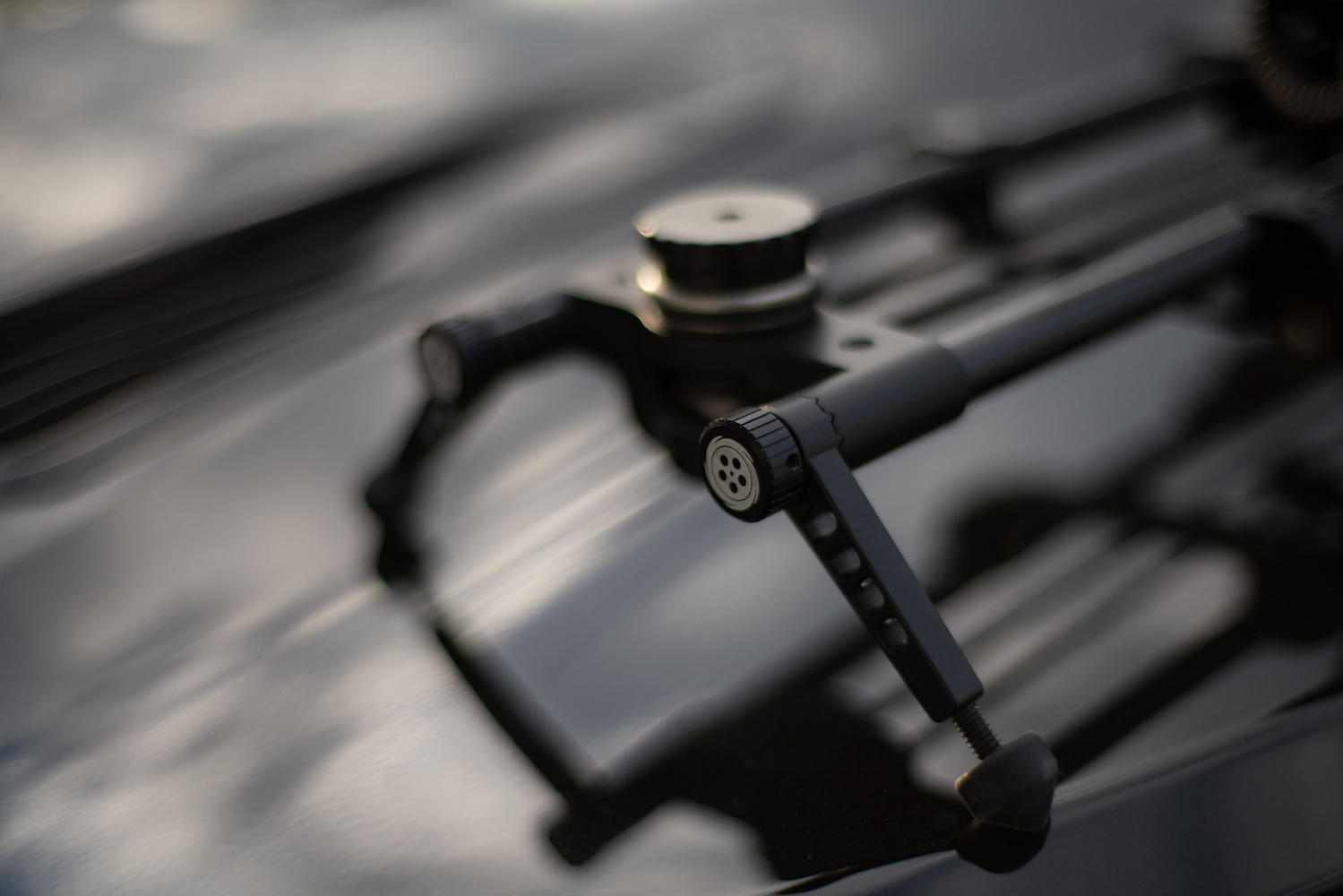There are many options available obtaining smooth motion and my favorite is the Cinetics Lynx. We'll dive into some features of this beautiful slider and go over some usage and my thoughts.
In today's market, video should be important even to a still photographer. So I am quite excited about this product and took my first real-world usage of it to feature a client's Lamborghini which was primarily a photo session. Even though my product may be the printed photos, I believe there's value in impact, especially on social media. Therefore, using some creative little video shorts should equal a better impression for the actual photos I sell. For photographing cars in general, I believe this product is certainly something to consider.
Getting Started
The Cinetics Lynx is a portable three-axis motion slider with a built-in battery system for remote shooting or can be used plugged in while in studio.
Upon opening the package, it's obvious some thought was put into this and the slider is well built and lightweight. Without any instruction or knowledge of the product it's pretty easy to see how everything plugs in and hooks up. Slide, pan, and tilt are labeled on the control box for ease of plugging it in correctly. Everything fits nicely in this package although I would see myself leaving the slider assembled and figuring out a good way to transport it, so I would not have to disassemble to put back in the bag. Perhaps I'm lazy. It's not a big deal, and only takes a minute.
The mounting plate that ships with Lynx is an Arca Swiss style, so if you already happen to use that for your tripod, you wouldn't need to change the mount on your camera body.
The Lynx is capable of lifting 5 pounds vertically so it's unlikely to run into a weight issue. Certainly not likely as a DSLR or mirrorless user. What I especially like about this is the ability to clamp a GoPro mount and do a BTS of the camera on the slider, or to potentially capture a different angle simultaneously while matching the movement.
While assembling the slider and putting the motors on you will notice they seem heavy. At first I was kind of surprised by this, until I realized it is for sound dampening and it works. These motors are whisper quiet.
Control Box
The included control box is robust with features. You can select time-lapse, video, and stop motion, as well as manual pan, tilt, slide, and setting a start point. Positions are chosen as keyframes, so to speak; set position 1, then move to position 2, and so forth. The idea behind the simplistic menu is to not need complex training or instructions. It's the type of device that appears to be geared toward someone who is ready to just jump in, which is the way I prefer to do things.
The Sony a7-series cameras are surprisingly still lacking in time-lapse and timer functionality. The available camera cables for different cameras from Cinetics will allow the slider to control and trigger even a Sony camera for making epic motion time-lapses. I'll follow up after doing this at a later date.
Mobile App Control
The Lynx allows for control via your mobile device via Bluetooth. What I found the coolest about the mobile app was that I am able to use my phone's gyroscope to control the slider via tilting the phone in the direction I want it to go. This is a fun way to use the slider.
What I Liked
- Built-in battery for going on location with ease.
- The mobile app controls the slider well.
- The footage is incredibly smooth with virtually no audible noise, and that's a very nice bonus.
- The adjustable track length for different types of jobs.
- Support and communication with the manufacturer directly is very good.
- Adjustable and sturdy legs that don't slip, even on smooth surfaces like car paint
What I Didn't Like
- I would like to see some better way of dealing with all the cables as they sometimes get pinched at the end of a slide or inside the track.
- The LCD on the control box looks pretty dated. That being said, it works perfectly so it's not really a dislike, just more of an observation.
Summary
The price is regularly $1,999.95, and is currently being offered at B&H with a $400 discount.
I've included in the video below some sample footage from a quick test (sensor dust and all). Hey, I said it was a test! There will be real edited footage to follow, but you can see from the sample that this thing is smooth. Very easy to do multi axis at once with no jerks or jumps. I love the feel of the finished footage.

Overall, I definitely recommend this slider and if you want smooth footage without the noise. I believe you will not be disappointed with this product. Get your Cinetics Lynx and start making super smooth cinematic footage.













I went through 2 copies of this, both exhibited the same issue when doing slides. Extremely jerky movements and was unsuitable for video. Pan and tilt worked good, but even at the slowest settings it had unusable start and stops/ ramps etc. It's really a shame because of how you can program all these awesome movements, but it just didnt work. In hindsight if you really search for sample footage, I believe they are being very selective of what video footage they are actually showing.
The Syrp Genie II looks a bit more elegant in form and function, if it ever gets released.
Price-wise, you can get a Konova kit for less, though it isn't quiet and I do like that aspect of the Lynx.
I really wish gimbal companies would come out with sliders and pan motors that could use their existing gimbals.